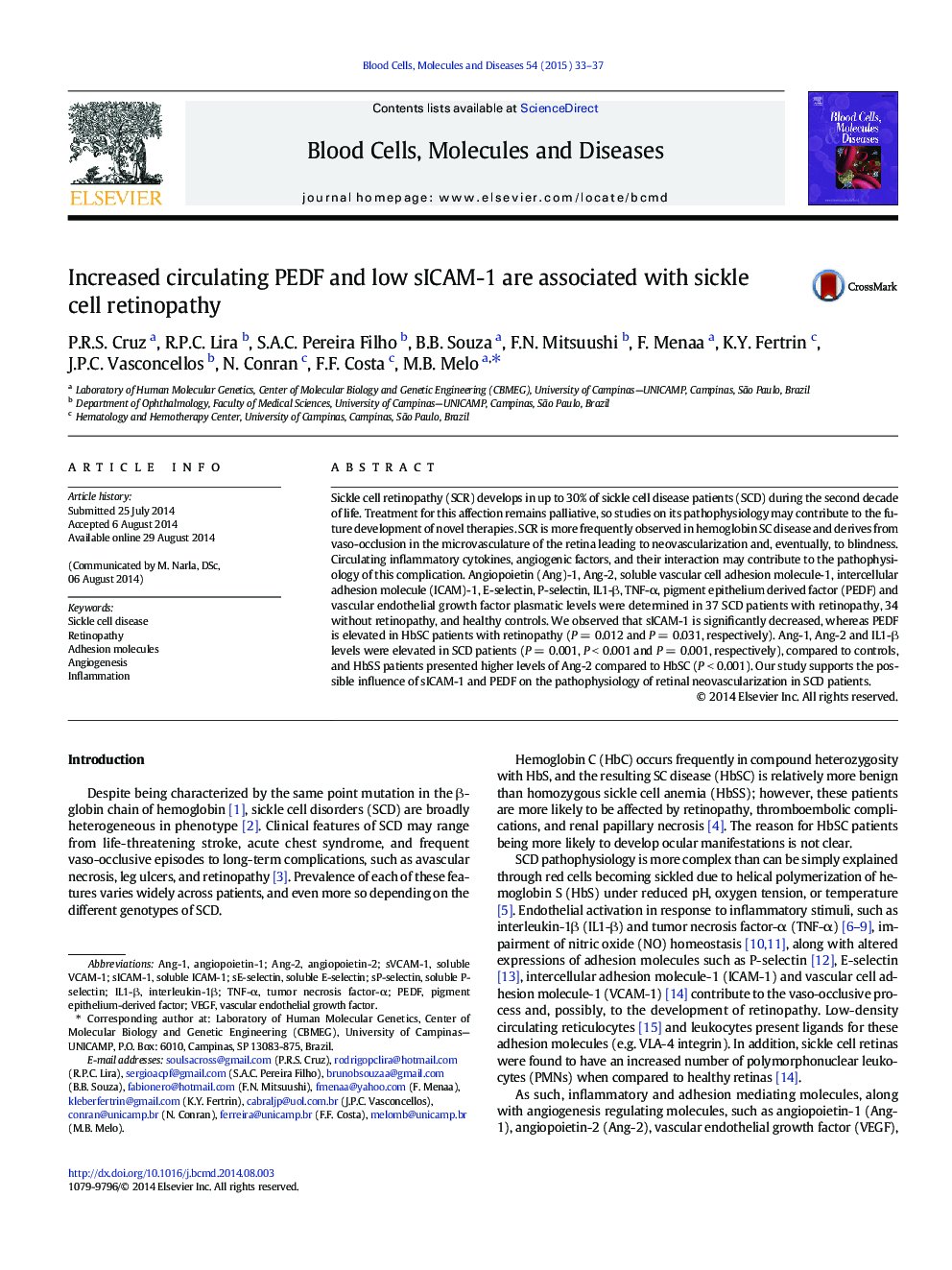| Article ID | Journal | Published Year | Pages | File Type |
|---|---|---|---|---|
| 5913484 | Blood Cells, Molecules, and Diseases | 2015 | 5 Pages |
Abstract
Sickle cell retinopathy (SCR) develops in up to 30% of sickle cell disease patients (SCD) during the second decade of life. Treatment for this affection remains palliative, so studies on its pathophysiology may contribute to the future development of novel therapies. SCR is more frequently observed in hemoglobin SC disease and derives from vaso-occlusion in the microvasculature of the retina leading to neovascularization and, eventually, to blindness. Circulating inflammatory cytokines, angiogenic factors, and their interaction may contribute to the pathophysiology of this complication. Angiopoietin (Ang)-1, Ang-2, soluble vascular cell adhesion molecule-1, intercellular adhesion molecule (ICAM)-1, E-selectin, P-selectin, IL1-β, TNF-α, pigment epithelium derived factor (PEDF) and vascular endothelial growth factor plasmatic levels were determined in 37 SCD patients with retinopathy, 34 without retinopathy, and healthy controls. We observed that sICAM-1 is significantly decreased, whereas PEDF is elevated in HbSC patients with retinopathy (P = 0.012 and P = 0.031, respectively). Ang-1, Ang-2 and IL1-β levels were elevated in SCD patients (P = 0.001, P < 0.001 and P = 0.001, respectively), compared to controls, and HbSS patients presented higher levels of Ang-2 compared to HbSC (P < 0.001). Our study supports the possible influence of sICAM-1 and PEDF on the pathophysiology of retinal neovascularization in SCD patients.
Keywords
sE-selectinsICAM-1sP-selectinPEDFangiopoietin-1IL1-βangiopoietin-2soluble VCAM-1sVCAM-1soluble E-selectinSoluble P-selectinAng-1Ang-2AngiogenesisinflammationInterleukin-1βSickle cell diseasetumor necrosis factor-αSoluble ICAM-1RetinopathyPigment epithelium-derived factorVascular endothelial growth factorVascular Endothelial Growth Factor (VEGF)TNF-αAdhesion molecules
Related Topics
Life Sciences
Biochemistry, Genetics and Molecular Biology
Molecular Biology
Authors
P.R.S. Cruz, R.P.C. Lira, S.A.C. Pereira Filho, B.B. Souza, F.N. Mitsuushi, F. Menaa, K.Y. Fertrin, J.P.C. Vasconcellos, N. Conran, F.F. Costa, M.B. Melo,
